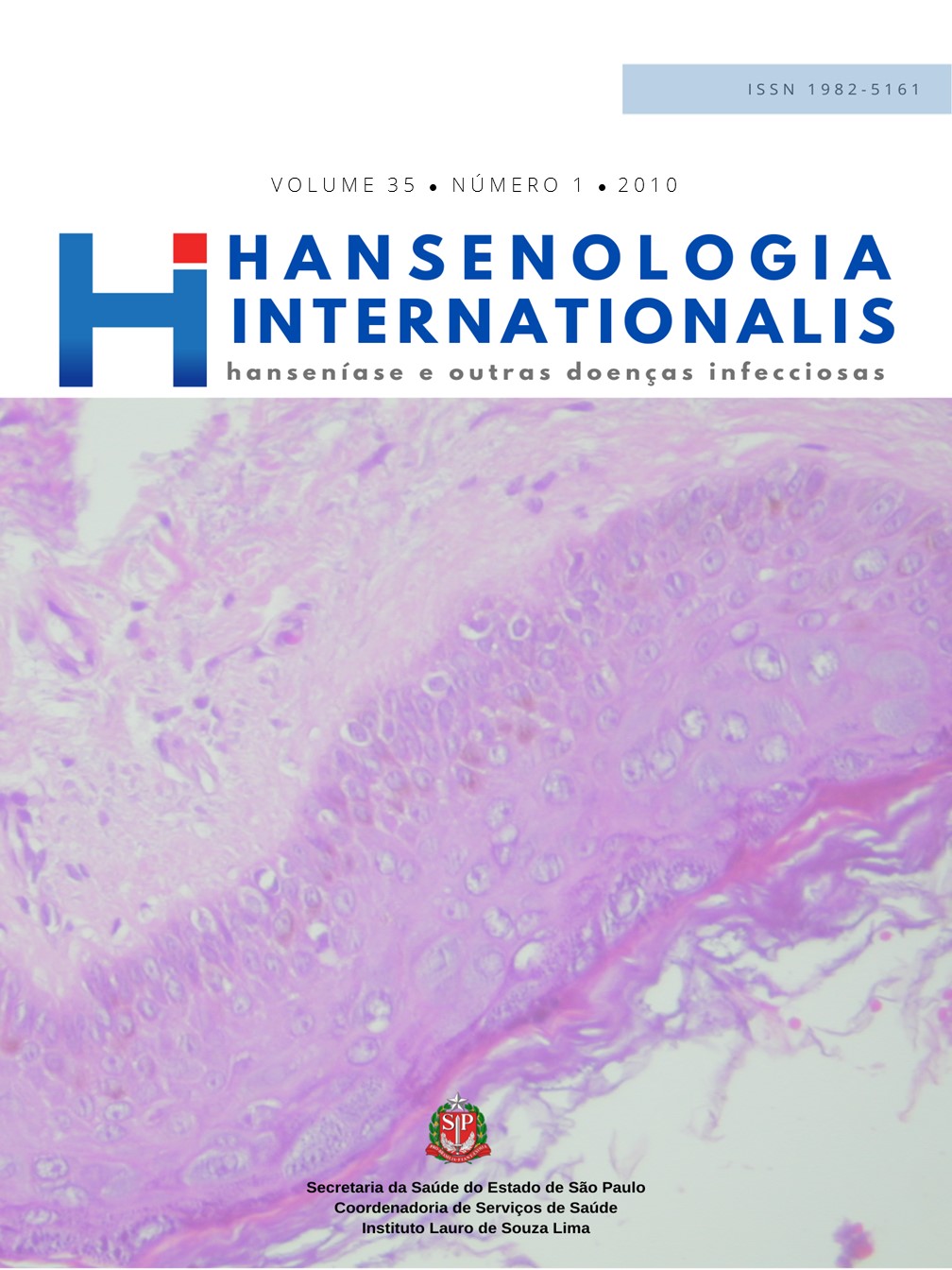Abstract
Introduction: Polar lepromatous leprosy (LLp) is a clinical form which the diagnosis is very difficult in early stages, since nerve damage is not seen, and there are not visible plaques. We report a case with atypical symptoms in an elderly man: the ruritus. Case report: Male, 81 years, caucasian, coming from Iti- Male, 81 years, caucasian, coming from Itirapina - SP, referred to the dermatological service with the diagnosis of “allergy”, reported that two years ago noted the presence of papules, plaques and nodules on the body, associated with intense pruritus, more pronounced on the lesions. Physical examination revealed diffuse livedo (which was not seen only on the area of the Michaelis polygon), as weel as acrocyanosis, madarosis, papules, plaques, and erythematous-violaceous nodules on the abdomen, perimamilar region, legs and buttocks. On neurological examination it was noted nerves thickening: both ulnars, radials, tibials, and left fibular. He had no ulnar claw and sensitivity test monofilaments showed no loss of tactile sensitivity on the hands, or even loss of protective sensitivity on the feet. Bacilloscopy of smear from index points ranged from 3-5+, with morphological index = 3%. The Mitsuda test was negative, and biopsy of the lesions showed LL. Discussion: The LLp is the most infectious form of leprosy, and it is the most difficult to make diagnosis, mainly when do not suspected. The virtual lack of immunity allows the bacilli proliferate in the nerve cell for nearly a decade, on average, without typical symptoms (lumps, “stains”, neuritis or deformities). Although atypical symptom, mucocutaneous xerosis can cause itching, and neurovascular involvement leads to livedo reticularis and acrocyanosis, signs that should alert the clinician to the diagnosis, especially if there is presence of spared areas of infiltration / livedo, like armpits, scalp and Michaelis polygon, very suggestive of LL. The neurological examination always shows diffuse thickening neural and skin smear is always very positive.
References
2 World Health Organization (WHO). Global leprosy situation, 2006. Wkly Epidemiol Rec. 2006;81:309-1
3 Ridley DS, Jopling WH. Classification of leprosy according to immunity: a five-group system. Int J Lepr Other Mycobact Dis. 1966; 34:255-73.
4 Mendonça VA, Costa RD, Melo GEBA, Antunes C M, Teixeira AL. Imunologia da hanseníase. An. Bras. Dermatol. 2008; 83(4): 343-350
5 Oliveira MLW, Penna GO, Talhari S. Role of dermatologists in leprosy elimination and post-elimination era: the Brazilian contribution. Lepr Rev. 2007; 78:17-21.
6 Opromolla DVA. Clínica da hanseníase. Hansenol Int. 2001; 26:1-4.
7 Foss NT: Hanseníase: aspectos clínicos, imunológicos e terapêuticos. An Bras Dermatol.1999;4(2): 113-9.
8 Baptista. La Ginecomastia na Lepra. Rev Brasil Leprol. 1937, 5: 53-66.
9 Maria do Perpétuo Socorro Corrêa Amador.Soroprevalência para hanseníase em áreas endêmicas do estado do Pará [dissertação]. Belém, Universidade Federal do Pará; 2004.
10 Morley Je et al: Hormones changes associated with testicular atrophy and gynaecomastia in patients with leprosy. Clin Endocrinol. 1977, 6: 299-303.
11 Job Ck: Gynecomastia and leprous orchitis. A preliminary study. Int J Lepr. 1961, 29: 423-441.
12 Schettini APM, Eiras JC, Cunha MGS, Tubilla LHM, Sardinha JCG. Hanseníase histoide de localizacao restrita. An. Brás. Dermatol. 2008; 83(5): 470-2
13 Brasil. Ministério da Saúde. Portaria conjunta n 125, de 26 de março de 2009. Define ações de controle da hanseníase. Diário Oficial da República Federativa do Brasil. Brasília, 27 de mar. de 2009.
14 P A Opromolla; I Dalben;M Cardim. Análise geoestatística de casos de hanseníase no Estado de São Paulo, 1991-2002. Rev Saúde Pública 2006; 40(5): 907-13.
15 Martin Fir et al. Leprous endocrinopathy. Lancet 1968, 2: 1320-1321.
16 Ree Gh et al. Hormonal changes in human leprosy. Lepr Rev. 1981, 52: 121-126.
17 Arruda M S P; Nogeuira M E S; Vilani F R; Costa H C; Arruda, O S. Avaliaçäo imunológica em pacientes idosos portadores de hanseníase. Salusvita; 7(1): 122-8, 1988.
18 Skacel M, Antunes SL, Rodrigues MM, Nery JA, Valentim VD, Morais RP, Sarno EN. The diagnosis of leprosy among patients with symptoms of peripheral neuropathy without cutaneous lesions: a follow-up study. Arq Neuropsiquiatr. 2000 Sep;58(3B):800-7.
19 Oliveira ML, Mendes CM, Tardin RT, Cunha MD, Arruda A. Social representation of Hansen’s disease thirty years after the term “leprosy” was replaced in Brazil. Hist Cienc Saude Manguinhos. 2003; 10(Suppl 1):41-8.
20 De Rojas V, Hernández O, Gil R. Some factors influencing delay in leprosy diagnosis. Bull Pan Am Health Organ. 1994 Jun; 28(2):156-6.

This work is licensed under a Creative Commons Attribution 4.0 International License.
